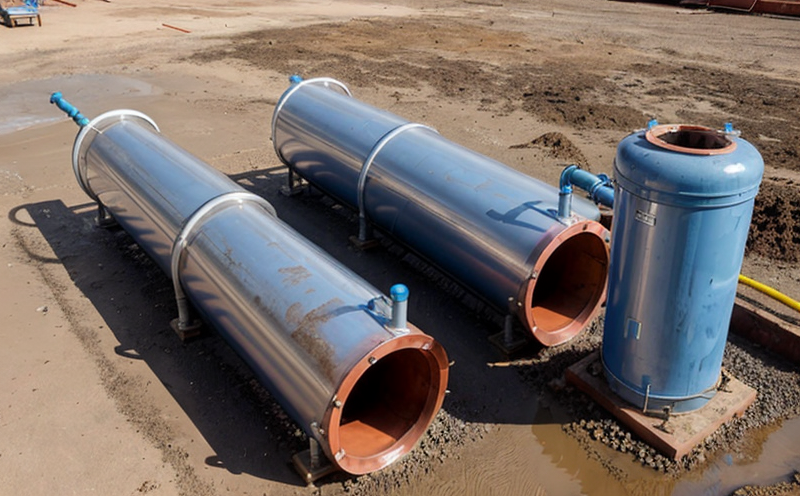Heat exchanger fouling inspection
The heat exchanger fouling inspection is a critical process in ensuring optimal performance and longevity of industrial equipment. Fouling, which refers to the accumulation of deposits such as scale, rust, or biological matter on the surface of heat exchangers, can significantly reduce thermal efficiency and increase operational costs over time.
During this inspection, our team uses advanced non-destructive testing (NDT) techniques to evaluate the internal condition of heat exchanger tubes. This allows us to identify fouling buildup without compromising the integrity of the equipment. Our approach is tailored to meet specific industry standards and regulatory requirements, ensuring compliance with international guidelines such as ISO 9778:2015 for thermal power plants.
The process begins with a detailed visual inspection using endoscopy or borescopes to assess the internal surface of the heat exchanger. Following this initial examination, we employ more sophisticated methods like ultrasonic testing (UT) and liquid penetrant testing (LPT) to detect sub-surface defects and microscopic contamination that may not be visible during a simple visual check.
Once the inspection is complete, our team provides a comprehensive report detailing the findings. The report includes detailed images captured during the inspection process along with quantitative data on the extent of fouling. This information helps facility managers make informed decisions about cleaning schedules and maintenance activities to prevent further degradation of performance.
In addition to the technical aspects outlined above, it's important to consider the broader implications of heat exchanger fouling inspections within an industrial context. By preventing or mitigating fouling, organizations can enhance overall operational efficiency, reduce energy consumption, and extend the life cycle of their equipment. This translates into significant cost savings over time.
It is also worth noting that effective heat exchanger fouling inspection plays a crucial role in maintaining environmental sustainability by promoting efficient resource use and minimizing waste generation. Through precise identification and targeted interventions, these inspections contribute to reduced greenhouse gas emissions and improved compliance with environmental regulations.
Why Choose This Test
- Accurate assessment of internal fouling without compromising equipment integrity.
- Compliance with international standards such as ISO 9778:2015 for thermal power plants.
- Use of advanced non-destructive testing (NDT) techniques including ultrasonic and liquid penetrant testing.
The heat exchanger fouling inspection is an essential service offered by our laboratory. It ensures that industrial equipment remains efficient, reliable, and compliant with relevant regulations. Our team leverages state-of-the-art technology to provide precise assessments of internal conditions, enabling proactive maintenance strategies that optimize performance and extend asset life.
By choosing this test, you are investing in the long-term sustainability and efficiency of your industrial facilities. The insights gained from our thorough inspections allow for targeted cleaning efforts, thereby reducing downtime and operational costs. Moreover, adherence to best practices in heat exchanger maintenance contributes to enhanced safety standards across various industries.
International Acceptance and Recognition
- The heat exchanger fouling inspection adheres strictly to international standards such as ISO 9778:2015 for thermal power plants, ensuring global acceptance of our findings.
- Our methods are recognized by major regulatory bodies worldwide, providing peace of mind regarding compliance and reliability.
The heat exchanger fouling inspection is widely accepted across the globe due to its adherence to strict international standards. By aligning with these guidelines, we ensure that our services meet the highest quality benchmarks, thus gaining trust from clients in diverse regions. This consistency not only facilitates smoother international collaborations but also enhances credibility within local markets.
Regulatory bodies around the world recognize the importance of thorough heat exchanger inspections for maintaining safety standards and operational efficiency. Our laboratory is committed to providing services that are compliant with these stringent requirements, thereby earning respect and preference among industry professionals.
Environmental and Sustainability Contributions
The heat exchanger fouling inspection plays a vital role in promoting environmental sustainability by facilitating efficient resource use and minimizing waste generation. By accurately identifying and addressing areas of fouling, organizations can implement targeted cleaning measures that optimize performance while reducing energy consumption.
This proactive approach contributes to lower greenhouse gas emissions and improved compliance with environmental regulations. Through regular inspections and maintenance based on our findings, facilities can achieve higher levels of operational efficiency without compromising safety or quality.





